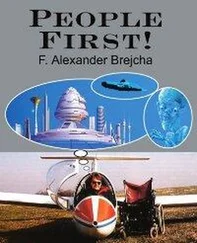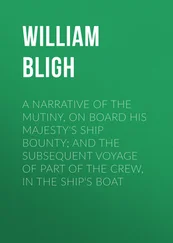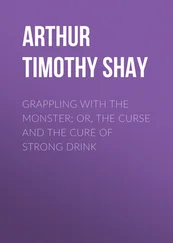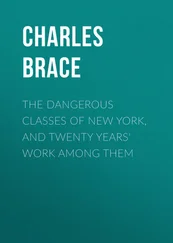Mattias Berg - The Carrier
Здесь есть возможность читать онлайн «Mattias Berg - The Carrier» весь текст электронной книги совершенно бесплатно (целиком полную версию без сокращений). В некоторых случаях можно слушать аудио, скачать через торрент в формате fb2 и присутствует краткое содержание. Город: London, Год выпуска: 2019, ISBN: 2019, Издательство: MacLehose Press, Жанр: Триллер, на английском языке. Описание произведения, (предисловие) а так же отзывы посетителей доступны на портале библиотеки ЛибКат.
- Название:The Carrier
- Автор:
- Издательство:MacLehose Press
- Жанр:
- Год:2019
- Город:London
- ISBN:978-0-85705-788-4
- Рейтинг книги:4 / 5. Голосов: 1
-
Избранное:Добавить в избранное
- Отзывы:
-
Ваша оценка:
- 80
- 1
- 2
- 3
- 4
- 5
The Carrier: краткое содержание, описание и аннотация
Предлагаем к чтению аннотацию, описание, краткое содержание или предисловие (зависит от того, что написал сам автор книги «The Carrier»). Если вы не нашли необходимую информацию о книге — напишите в комментариях, мы постараемся отыскать её.
The Carrier — читать онлайн бесплатно полную книгу (весь текст) целиком
Ниже представлен текст книги, разбитый по страницам. Система сохранения места последней прочитанной страницы, позволяет с удобством читать онлайн бесплатно книгу «The Carrier», без необходимости каждый раз заново искать на чём Вы остановились. Поставьте закладку, и сможете в любой момент перейти на страницу, на которой закончили чтение.
Интервал:
Закладка:
“So now it’s our move, my treasure.”
When Ingrid began to enter commands on her keyboard, I fell in with her rhythm, like a musician. At the same time I keyed 122 129 on the keyboard in my briefcase: the code which I had shown my mother there at the kitchen table, at the dawn of time. Which clearly became “HELP” by way of my strange key sentence.
Our little four-hands piece had immediate effect. The green markings quickly turned to yellow, then red, as they had before. Everything felt at the same time terribly heavy and unbearably light. A soft murmuring in the deepest recesses of my mind, as if from something electric, a fan perhaps, a humming refrigerator. The launch counter was quickly spinning down to zero. The exterior images showed the wide expanses to the north, west and south of the base beginning to vibrate as the hatches in the ground opened up revealing our silos with the hundreds of ageing Minuteman-3 missiles, dinosaurs from the Cold War; as if a minor earthquake had struck. The ground shook, smoke from the ignition engines billowed over the surface.
And despite the indicators blinking with apparent anger, the desperate warning cries which could be heard crackling through the base’s loudspeaker system, this time the events just continued to unfold. The missiles really were launched—even if they all then exploded still deeply embedded in their silos.
The smoke spread all the same, the gas and flames quickly broadening out through the support tunnels. The missile operators in Global Strike Command ran for their lives. The body count in the screen’s bottom right-hand corner had risen to eighteen in less than a minute.
Then Ingrid closed down the image on her portable terminal, all with a single command, which made the same happen on the screen in the lid of my briefcase. I felt her watching me—and turned to meet her gaze: that ice-gray challenge.
“I don’t think we can cope with seeing more for now. Forgive me, my treasure. But it was in the heat of the moment.”
3.06
There was a painting. I had never seen it. And yet I had seen it, before my own eyes, day and night. Always carried the reproduction hidden in my combat pack.
I had never been able to experience the original, at the Prado Museum in Madrid, because it had been to all intents and purposes impossible for me to get security clearance for private visits overseas. I knew that it was a relatively small painting—like so many other truly great works of art: not more than four feet by five and a half. Yet he had managed to include so many terrifying details in it.
I brought it out again, the night after Ingrid’s simulated attack on Minot, to comfort me or mark my despair. There were no nuclear wars at the time of Pieter Bruegel the Elder in the middle of the sixteenth century, we must assume, so he may have had second sight. The painting showed exactly what the aftermath of the big bang would look like. Scorched earth and bare trees, the feeling that nothing at all had survived, could survive, wandering skeletons milking the soul out of the few things remaining to be plundered, driving around a cart full of skulls, piles of dead bodies. Everything moreover steeped in a sickly yellow-brown tone. This was what Bruegel called “The Triumph of Death”.
But the strangest things of all were in the painting’s bottom right-hand corner. The terror-struck people, the few still living, who together with phantoms and corpses seemed to be being herded—or themselves fleeing—into what looked very much like a railway cattle truck. And outside the open door one could see something resembling an iron cross.
Bruegel’s painting was truly prophetic. And not just about nuclear war—also the Holocaust, the transports to the concentration camps, the killing toward the end of the Second World War.
You must understand. But you won’t.
Just as we had never understood, before it was too late.
On September 3, 1949, one of the American W.B.-29s patrolling the airspace beyond the Kamchatka Peninsula recorded unusual readings on its sensors. Some sort of radioactive debris had been picked up, three hundred times stronger than the established maximum safety level. Further testing determined that the radiation was caused by nuclear fission. Ten days later U.S. military experts assigned this military event the code name “Joe 1”, from Stalin’s nickname “Joe”. The Soviet Union had detonated an atom bomb.
Barely three weeks after the radioactivity had been registered near Kamchatka, the news reached the committee of researchers and industrialists who were to decide on next steps.
From then on it was not only a question of whether the U.S. should try to develop a weapon with perhaps one million times the explosive power of the atom bomb: with a realistic possibility of wiping out mankind. But also whether the Soviet Union would soon acquire a weapon with the same potential.
In reply to a question about the effectiveness of this new weapon, the hydrogen bomb, General James McCormack gave this answer:
“If all of the theory turned out to be true, you can have it any size up to the sun or thereabouts if you wanted… one million times more powerful than the atomic bomb.”
True, there were theoretical problems to be overcome. Many of the scientists had not only technical but also strong ethical doubts over the development of the hydrogen bomb.
Hans Bethe was one of those scientists, another of the prominent nuclear physicists among the intellectual diaspora gathered in the U.S.to work on the atom bomb. In 1933 he lost his research post in Germany because of his Jewish heritage, and during the war became the head of the theoretical division at Los Alamos. In due course he also became an active participant in the development of what was called the thermonuclear weapon, the hydrogen bomb: what was at first only referred to in conversation as “Super”.
Bethe went into the project with a secret hope that the technology would turn out never to function. During the intensive ethical discussions in the fall of 1949, he went for a long walk with his Austrian colleague Victor Weisskopf, across the campus of Princeton, trying to imagine the effects of a full-scale thermo-nuclear war. Much later he revealed what they had concluded:
“We both had to agree that, after such a war, even if we were to win it, the world would not be like the world we want to preserve. We would lose the thing we were fighting for.”
The General Advisory Report, which in 1949 eventually resulted from the intensive discussions of American researchers and industrialists on the subject of the hydrogen bomb, was also unambiguous. Thermonuclear weapons should never be developed. The atom bombs already in the U.S.’s arsenal were more than sufficient, it said, to counter even a large Soviet attack.
“In determining not to proceed to develop the super bomb,” it said, “we see a unique opportunity to provide by example some limitations on the totality of war and thus to limit the fear and to arouse the hope of mankind.”
The continuation, in the minority report, is a classic example of applied scientific ethics:
“Necessarily such a weapon goes far beyond any military objective and enters the range of very great natural catastrophes. By its very nature it cannot be confined to a military objective but becomes a weapon which in practical effect is almost one of genocide. It is clear that the use of such a weapon cannot be justified on any ethical ground which gives a human being a certain individuality and dignity even if he happens to be a resident of an enemy country.”
And further:
“The fact that no limits exist to the destructiveness of this weapon makes its very existence and the knowledge of its construction a danger to humanity as a whole. It is necessarily an evil thing considered in any light.”
Читать дальшеИнтервал:
Закладка:
Похожие книги на «The Carrier»
Представляем Вашему вниманию похожие книги на «The Carrier» списком для выбора. Мы отобрали схожую по названию и смыслу литературу в надежде предоставить читателям больше вариантов отыскать новые, интересные, ещё непрочитанные произведения.
Обсуждение, отзывы о книге «The Carrier» и просто собственные мнения читателей. Оставьте ваши комментарии, напишите, что Вы думаете о произведении, его смысле или главных героях. Укажите что конкретно понравилось, а что нет, и почему Вы так считаете.












